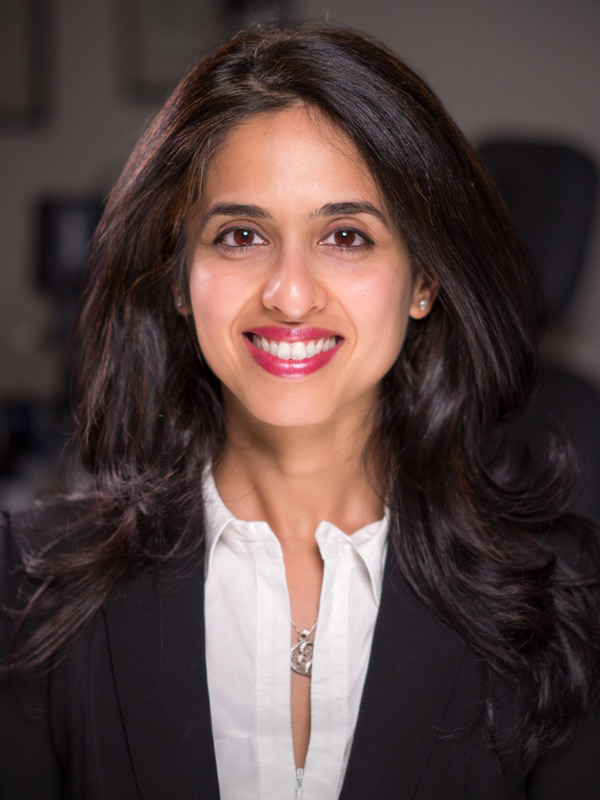
What is a LASIK Flap
The LASIK flap is a thin layer of corneal tissue created at the start of surgery to access and reshape the underlying cornea. It is lifted, the laser is applied, and the flap is repositioned to heal naturally without stitches. It acts as a protective bandage and supports rapid recovery.
The full answer
If you've been looking into LASIK, chances are you've come across the term flap and you might be wondering what it actually means.
The flap is a key part of how LASIK works, but it's also the part that tends to spark the most questions. In this article, we’ll walk you through what the flap is, what happens to it during surgery, how it heals, and what to know about taking care of yourself post-surgery to give you the best chance of a quick recovery and avoiding rare complications. For more about how the healing process impacts vision in the short term, take a look at our article ‘How long will my vision be blurry after LASIK?’
This guide will help you understand how the LASIK flap works and why it's nothing to be afraid of when you're in experienced hands. At IVISION LASER, we can offer LASIK in Adelaide, so if you’d like to book a consultation to determine your suitability for LASIK, get in touch.
What is the flap in LASIK surgery?
The LASIK flap is one of the things that makes this type of laser eye surgery different from other techniques and it plays a pretty clever role in the process.
The Purpose of the Flap
During LASIK, a thin flap is created on the surface of your cornea - the clear, dome-shaped front part of the eye. This flap is gently lifted so that the laser can reshape the tissue underneath, correcting your vision by adjusting how light focuses at the back of the eye.
The flap is then carefully placed back into position, where it naturally starts to settle and reattach without the need for stitches.
How it allows laser access to the cornea
Creating the flap is a key step because it gives the laser direct access to the middle layer of the cornea (called the stroma), which is where the reshaping takes place1 https://www.mayoclinic.org/tests-procedures/lasik-eye-surgery/about/pac-20384774 .
The flap acts like a natural bandage once it's replaced, helping to protect the eye and allowing for a relatively quick recovery compared to PRK surgery, which involves removing the epithelial layer2 https://www.healthline.com/health/prk .
Flap-based vs Flapless laser eye procedures
Not all laser eye surgeries involve a flap. LASIK is a flap-based procedure, while others, like PRK or TransPRK (also known as SmartSurfACE), are flapless. These options might be recommended if the cornea is too thin or if there are other reasons why a flap-based approach isn’t ideal.
Your eye specialist will advise which method is most suitable based on your individual eye health, prescription, and lifestyle needs.
What happens to the flap during surgery?
Understanding what happens to the flap during LASIK can make the whole process feel a lot less mysterious. It’s a precise, controlled step that your surgeon handles with great care from start to finish.
How the flap is created and lifted
The flap is created at the very beginning of the LASIK procedure using either a specialised blade (microkeratome) or a femtosecond laser3 https://www.ncbi.nlm.nih.gov/books/NBK555970/#article-35813.s9 . These days, many clinics use all-laser technology, which allows for highly accurate, ultra-thin flaps tailored to your eye’s shape.
Once the flap is made, it’s gently lifted and folded back like the cover of a book, staying attached at one edge. This reveals the inner corneal layer where the laser will be applied.
What happens to the flap while the laser is applied
With the flap lifted, the surgeon uses an excimer laser to precisely reshape the corneal tissue underneath4 https://www.mayoclinic.org/tests-procedures/lasik-eye-surgery/about/pac-20384774 . This step is quick, often lasting less than a minute per eye5 https://pubmed.ncbi.nlm.nih.gov/26049833/ , and is guided by detailed measurements taken before the procedure6https://www.ncbi.nlm.nih.gov/books/NBK555970/#article-35813.s9 .
The flap itself is out of the way while the laser does its job, and nothing is done to the flap during this stage.
How the flap is repositioned at the end of the procedure
Once the laser reshaping is complete, the flap is carefully laid back into place. No stitches are needed7 https://www.ncbi.nlm.nih.gov/books/NBK555970/#article-35813.s9 , the flap naturally adheres through surface tension.
Your surgeon will check that the flap is properly aligned before finishing up, and you’ll typically wear protective shields for a short period to avoid accidentally rubbing your eyes while the healing process begins.
How the LASIK flap heals over time
LASIK flap healing stages
After surgery, the surface cells of the cornea (epithelium) start to regrow rapidly8 https://pubmed.ncbi.nlm.nih.gov/18515582/ . The flap edges begin to bond back to the underlying tissue in the first few days, and by the end of the first week, it’s usually well adhered and stable9 https://www.ncbi.nlm.nih.gov/books/n/statpearls/article-135490/ .
Internally, the cornea continues subtle healing over several months10 https://www.mayoclinic.org/tests-procedures/lasik-eye-surgery/about/pac-20384774 .. While you might feel like your vision is back to normal quickly, your eye surgeon will still monitor flap healing during your follow-up appointments.
How quickly the flap begins to settle
The flap starts to settle immediately after surgery. Most people are advised to take it easy for the first few days, avoiding contact sports, swimming and driving11 https://www.mayoclinic.org/tests-procedures/lasik-eye-surgery/about/pac-20384774 .. Protective shields are often worn while sleeping to prevent accidental movement12 https://www.mayoclinic.org/tests-procedures/lasik-eye-surgery/about/pac-20384774 .
By the end of the first week, the flap is typically secure enough that normal daily activities can resume (as advised by your surgeon), though full structural healing continues in the background.
How to support flap recovery after LASIK
Taking care of your eyes in the days and weeks after LASIK plays a big part in how well your flap heals. While recovery is generally straightforward, a few simple precautions can help protect your eyes and reduce the risk of flap-related issues.
Protective eyewear and activity restrictions
Right after surgery, you’ll likely be given protective shields to wear while sleeping13 https://www.mayoclinic.org/tests-procedures/lasik-eye-surgery/about/pac-20384774 – this helps prevent you from accidentally rubbing or bumping your eyes. Sunglasses are also useful when heading outdoors, not just for comfort but also to shield your eyes from dust and wind.
You’ll also need to avoid certain activities for a short time, including:
- Swimming or using hot tubs14 https://www.mayoclinic.org/tests-procedures/lasik-eye-surgery/about/pac-20384774
- Contact sports or high-impact exercise15 https://www.mayoclinic.org/tests-procedures/lasik-eye-surgery/about/pac-20384774
- Eye makeup or face creams near the eyes16 https://www.mayoclinic.org/tests-procedures/lasik-eye-surgery/about/pac-20384774
Your surgeon will give you a personalised list of do’s and don’ts depending on your healing progress.
Avoiding rubbing or pressure on the eyes
One of the most important recovery tips? Don’t rub your eyes. Eye rubbing needs to be avoided at least within the first five days following LASIK surgery to avoid healing complications17 https://www.drugs.com/mtm/photrexa.html . If your eyes feel dry or irritated, use the lubricating drops provided18 https://www.ncbi.nlm.nih.gov/books/NBK555970/#article-35813.s9 rather than touching them.
It’s also important to avoid putting pressure on the eyes in this initial recovery period19 https://www.healthline.com/health/does-laser-eye-surgery-hurt . For this reason, it is advisable to avoid positions that increase the flow of blood to the head, such as sleeping face-down or doing yoga in head-down positions such as downward-facing dog.
Importance of follow-up appointments
Your follow-up visits are there to make sure everything is healing as expected. During these check-ups, your surgeon will examine the flap, monitor your vision, and address any concerns.
If you notice changes in vision, discomfort, or anything that doesn’t feel right between visits, don’t wait – contact your clinic for advice. Early attention makes a big difference if anything needs to be adjusted.
When to speak with your eye specialist
Most people recover from LASIK without any issues, but it’s still important to know when to check in with your eye specialist, especially if something doesn’t feel quite right. Flap-related problems are generally rare at less than 1% of cases20 https://pubmed.ncbi.nlm.nih.gov/23960931/ , but early action is key if they do occur.
Symptoms that may indicate a flap problem
Get in touch with your clinic if you experience:
- Sudden or ongoing blurry vision
- Sharp discomfort or pain that doesn’t settle
- A sensation of something in the eye
- Visible changes in the eye’s surface
- Light sensitivity or halos that appear worse than expected
These signs don’t always mean something is wrong with the flap, but they’re worth getting checked just in case.
Why early assessment matters
The key takeaway here is that the earlier a potential flap issue is identified, the easier it is to manage. Whether it’s a minor wrinkle, a bit of inflammation, or something more complex like dislodgement, your eye specialist can assess the situation and recommend next steps.
Timely treatment can help protect your vision and avoid more involved corrections later on, so if you have any concerns about how healing is going for you, or if you’re experiencing any of the symptoms listed above, contact your eye specialist and be sure to let them know your concerns so you can be seen promptly.
How to arrange a consultation at IVISION LASER in Adelaide
If you’re experiencing symptoms after LASIK (or if you’ve had surgery elsewhere and want a second opinion) IVISION LASER offers comprehensive assessments.
To book a consultation, simply book a free assessment at our Adelaide clinic. We’re here to help you understand what’s going on and support your recovery with professional, personalised care.
Conclusion
The LASIK flap is an important part of how laser eye surgery works. While it often heals without any issues, it’s good to understand how it behaves both during and after surgery as knowing what to expect puts you in a better position to make informed choices about your eye health.
At IVISION LASER in Adelaide, we’re here to answer your questions, assess your vision, and help you decide what’s right for you – whether that involves LASIK, an alternative treatment, or simply checking that everything is healing as it should.
Find out if you are suitable for vision correction
Not everyone is eligible for vision correction surgery.
Find out if you could benefit from this life changing surgery by taking the quick self-suitability quiz below:
Our most popular procedures

Hi, I’m Dr Aanchal Gupta, your laser and cataract surgeon in Adelaide
Over the past 10 years, I’ve had the joy of helping thousands of patients of all ages gain clear vision and freedom from glasses and contact lenses.
Laser eye surgery is a skill. Performing vision correction at a world-class standard hinges upon the expertise of your surgeon and their access to state-of-the-art tools.
I understand that getting eye surgery is a serious decision. Your eyes are unique and you should demand a custom solution tailored to your needs, lifestyle and goals. That’s why we offer a free appointment so we can meet and I can take the time to answer your questions and talk through any concerns you have.
I am passionate about helping patients transform their lives. I look forward to spending time with you at our gorgeous eye clinic in the heart of Adelaide to see whether you could gain exceptional vision without the need for glasses or contacts.
Dr Aanchal Gupta
MBBS, M.Med. (Ophth. Sci.), Grad. Dip. (Refract. Surg.), FRANZCO
Expert Laser Eye and Cataract Surgeon
